
Angela Yvonne Davis is an American Marxist and feminist political activist, philosopher, academic, and author. She is Distinguished Professor Emerita of Feminist Studies and History of Consciousness at the University of California, Santa Cruz. Davis was a longtime member of the Communist Party USA (CPUSA) and a founding member of the Committees of Correspondence for Democracy and Socialism (CCDS). She was active in movements such as the Occupy movement and the Boycott, Divestment and Sanctions campaign.

The civil rights movement was a social movement and campaign from 1954 to 1968 in the United States to abolish legalized racial segregation, discrimination, and disenfranchisement in the country. The movement had its origins in the Reconstruction era during the late 19th century and had its modern roots in the 1940s. After years of direct actions and grassroots protests, the movement made its largest legislative gains in the 1960s. The social movement's major nonviolent resistance and civil disobedience campaigns eventually secured new protections in federal law for the civil rights of all Americans. The social movement's span of time is called the civil rights era.
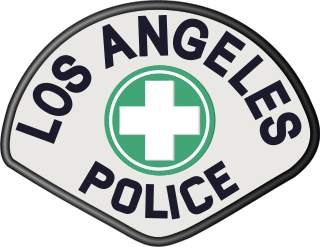
The Los Angeles Police Department (LAPD), officially known as the City of Los Angeles Police Department, is the primary law enforcement agency of Los Angeles, California, United States. With 8,832 officers and 3,000 civilian staff, it is the third-largest municipal police department in the United States, after the New York City Police Department and the Chicago Police Department.

The Watts riots, sometimes referred to as the Watts Rebellion or Watts Uprising, took place in the Watts neighborhood and its surrounding areas of Los Angeles from August 11 to 16, 1965. The riots were motivated by anger at the racist and abusive practices of the Los Angeles Police Department, as well as grievances over employment discrimination, residential segregation, and poverty in L.A.
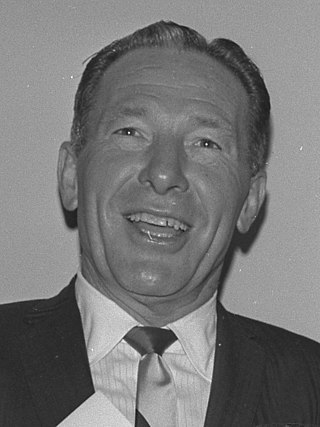
Samuel William Yorty was an American politician, attorney, and radio host from Los Angeles, California. He served as a member of the United States House of Representatives and the California State Assembly, but he is most remembered for his turbulent three terms as the 37th Mayor of Los Angeles from 1961 to 1973. Although Yorty spent almost all of his political career as a Democrat, he became a Republican in 1973.
Michael Ryan Davis was an American writer, political activist, urban theorist, and historian based in Southern California. He was best known for his investigations of power and social class in works such as City of Quartz and Late Victorian Holocausts. His last two non-fiction books were Set the Night on Fire: L.A. in the Sixties, co-authored by Jon Wiener, and The Monster Enters: COVID-19, Avian Flu, and the Plagues of Capitalism.

The 1992 Los Angeles riots were a series of riots and civil disturbances that occurred in Los Angeles County, California, United States, during April and May 1992. Unrest began in South Central Los Angeles on April 29, after a jury acquitted four officers of the Los Angeles Police Department (LAPD) charged with using excessive force in the arrest and beating of Rodney King. The incident had been videotaped by George Holliday, who was a bystander to the incident, and was heavily broadcast in various news and media outlets.
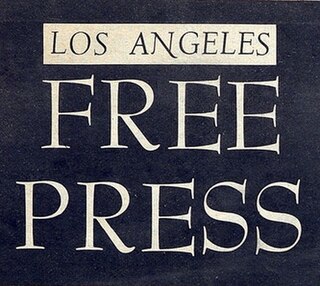
The Los Angeles Free Press, also called the "Freep", is often cited as the first, and certainly was the largest, of the underground newspapers of the 1960s. The Freep was founded in 1964 by Art Kunkin, who served as its publisher until 1971 and continued on as its editor-in-chief through June 1973. The paper closed in 1978. It was unsuccessfully revived a number of times afterward.

Marc Cooper is an American journalist, author, journalism professor and blogger. He is a contributing editor to The Nation. He wrote the popular "Dissonance" column for LA Weekly from 2001 until November 2008. His writing has also appeared in such publications as the Los Angeles Times, The Atlantic Monthly, Harper's Magazine, The New Yorker, The Christian Science Monitor, Playboy and Rolling Stone.
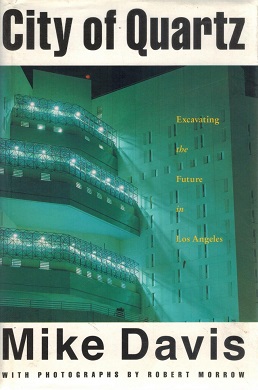
City of Quartz: Excavating the Future in Los Angeles is a 1990 book by Mike Davis examining how contemporary Los Angeles has been shaped by different powerful forces in its history. The book opens with Davis visiting the ruins of the socialist community of Llano, organized in 1914 in what is now the Antelope Valley north of Los Angeles. The community moved in 1918, leaving behind the "ghost" of an alternative future for LA.
Quincy Thomas Troupe, Jr. is an American poet, editor, journalist and professor emeritus at the University of California, San Diego, in La Jolla, California. He is best known as the biographer of Miles Davis, the jazz musician.
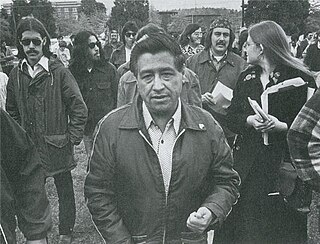
The Chicano Movement, also referred to as El Movimiento, was a social and political movement in the United States that worked to embrace a Chicano/a identity and worldview that combated structural racism, encouraged cultural revitalization, and achieved community empowerment by rejecting assimilation. Chicanos also expressed solidarity and defined their culture through the development of Chicano art during El Movimiento, and stood firm in preserving their religion.
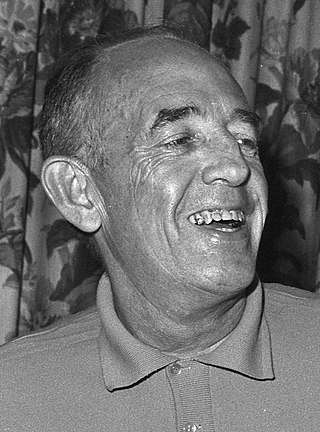
William Henry Parker III was an American law enforcement officer who was Chief of the Los Angeles Police Department (LAPD) from 1950 to 1966. To date, he is the longest-serving LAPD police chief. Parker has been called "Los Angeles' greatest and most controversial chief of police". The former headquarters of the LAPD, the Parker Center, was named after him. During his tenure, the LAPD was known for police brutality and racism; Parker himself was known for his "unambiguous racism".
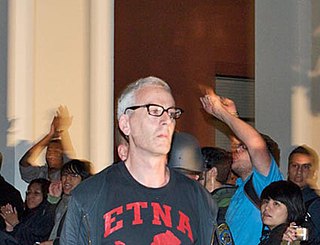
Joshua Clover is a writer and a professor of English and Comparative Literature at the University of California, Davis.

Jon Wiener is an American historian and journalist based in Los Angeles, California. His most recent book is Set the Night on Fire: L.A. in the Sixties, a Los Angeles Times bestseller co-authored by Mike Davis. He waged a 25-year legal battle to win the release of the FBI's files on John Lennon. Wiener played a key role in efforts to expose the surveillance, as well as the behind-the-scenes battling between the government and the former Beatle, and is an expert on the FBI-versus-Lennon controversy. A professor emeritus of United States history at the University of California, Irvine and host of The Nation's weekly podcast, Start Making Sense, he is also a contributing editor to the progressive political weekly magazine The Nation. He also hosts a weekly radio program in Los Angeles.
Personal Rights in Defense and Education (PRIDE) was a gay political organization. It was established in 1966 as a radical gay political organization that from its origination set a new tone for gay political groups like the Gay Liberation Front (GLF), ACT UP and the Radical Faeries. PRIDE led aggressive, unapologetic demonstrations against the oppression by the Los Angeles Police Department (LAPD) of gay gatherings or same-sex meetings in the city of Los Angeles. PRIDE's monthly single-page newsletter evolved into The Advocate, the nation's longest running gay news publication.

This is a bibliography of Los Angeles, California. It includes books specifically about the city and county of Los Angeles and more generally the Greater Los Angeles Area. The list includes both non-fiction and notable works of fiction that significantly relate to the region. The list does not include annual travel books, recipe books, and currently does not contain works about sports in the region.
Chris Morris is a music writer based in Los Angeles, California. He is known for his coverage of L.A.'s independent scene in the 1970s and 1980s, which made him "a central voice in Left Coast music journalism." He has also written well-received books on Los Lobos and Bob Dylan.

Women, Race and Class is a 1981 book by the American academic and author Angela Davis. It contains Marxist feminist analysis of gender, race and class. The third book written by Davis, it covers U.S. history from the slave trade and abolitionism movements to the women's liberation movements which began in the 1960s.
The 1967 Century City anti-Vietnam War march, also known as the 1967 Century City police riot, was an anti-Vietnam War protest march which took place on June 23, 1967, in the Century City neighborhood of Los Angeles. Beginning with a demonstration against the war by an estimated 10,000 people, the march was soon halted by a contingent of Los Angeles Police (LAPD) officers who began assaulting the protesters, later claiming that they believed a mob was forming. In the end, 51 arrests were made and an unknown number of protesters were left injured.


















